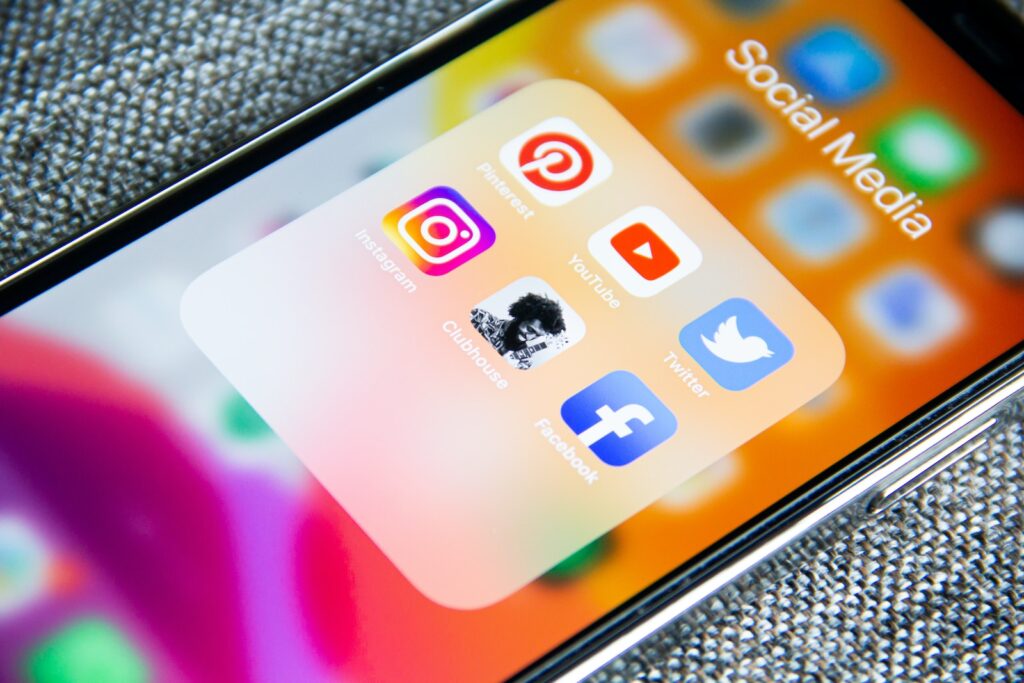When it comes to parenting and talking about the use of social media, many parents are at a loss for words. It’s hard enough trying to keep up with the ever-changing landscape of digital communication, nevermind trying to protect our kids from potential harm. However, recent recommendations from experts in the field of digital safety suggest that a different approach could be helpful in teaching our kids how to use social media responsibly.
In this article, we’ll discuss the new recommendations for teens using social media and how they can potentially help prevent harm while still enjoying all the wonderful things that social media has to offer. We’ll also look at some strategies parents can use to facilitate conversations with their teens about safe social media use.
The Impact of Social Media on Teenagers
Social media has become a ubiquitous part of modern teenagers’ lives, providing a platform to connect with friends, share information, and express themselves. However, recent studies have suggested that social media can have a negative impact on teenagers’ mental health, leading to feelings of anxiety, depression, and low self-esteem. In light of these findings, new recommendations have been made to help teens use social media in a healthy and positive way.

1. The Dangers of Social Media for Mental Health
Studies have shown that excessive use of social media can have a negative impact on teenagers’ mental health. One study found that “adolescents who spent more than three hours a day on social media had a higher rate of mental health problems, including anxiety, depression, and poor self-esteem” (source). Another study found that “teenagers who compared themselves to others on social media were more likely to experience symptoms of anxiety and depression” (source).
2. New Recommendations for Teenagers on Social Media Use
To prevent teenagers from experiencing negative mental health effects from social media, new recommendations have been made by experts. Some of these recommendations include:
Limiting social media use to a set amount of time each day.
Following positive and supportive accounts that promote self-esteem and mental health.
Avoiding comparison with others on social media by focusing on personal achievements and goals.
Taking frequent breaks from social media to engage in other activities and hobbies.
By following these recommendations, teenagers can reduce the negative impact of social media on their mental health, while still enjoying its benefits.
💡 key Takeaway: Social media can have a negative impact on the mental health of teenagers, but new recommendations can help prevent harm. By limiting social media use, following positive accounts, avoiding comparison, and taking breaks, teens can use social media in a healthier and more positive way.
New Social Media Recommendations for Parents
new social media recommendations for parents
Recent studies have shown that the increased use of social media platforms among teenagers can have a harmful impact on their mental health and overall wellbeing. To address this issue, new social media recommendations have been developed for parents to help prevent harm and promote healthier online behaviors among teens.
1. Monitor Social Media Usage
The first and most important recommendation for parents is to monitor their children’s social media usage. By keeping an eye on their online activity, parents can quickly spot any signs of harmful behavior or negative interactions with other users. This can help prevent serious issues from escalating and provide an opportunity for parents to talk with their children about online safety and responsible social media use.
2. Encourage Positive Online Behaviors
It is equally important for parents to encourage positive online behaviors and promote healthy relationships with others on social media. This can include reinforcing positive feedback, encouraging respectful communication, and fostering a sense of empathy and compassion when interacting with others online. By emphasizing the importance of respect and kindness online, parents can help their children develop healthy habits and avoid negative social media encounters.

3. Limit Screen Time and Social Media Exposure
Another key recommendation for parents is to limit their children’s screen time and social media exposure. Too much time spent online can have a negative impact on mental health and overall wellbeing, so it is important to set boundaries and encourage time spent on other activities. Parents can encourage outdoor activities, hobbies, or other social interactions to promote a healthy balance between online and offline experiences.
4. Stay Updated on Social Media Trends and Risks
With the rapidly changing landscape of social media, it is important for parents to stay updated on the latest trends and risks. This includes keeping informed about new social media platforms and potential risks associated with them. Parents can also educate themselves on how to report inappropriate behavior and how to access resources that can provide support for their children if needed.
💡 key Takeaway: New social media recommendations for parents can help prevent harm and encourage healthy online behaviors among teenagers. This includes monitoring social media usage, encouraging positive online behaviors, limiting screen time, and staying updated on social media trends and risks. By promoting responsible social media use, parents can help their children stay safe and avoid harmful online encounters.
Guidelines for Teenagers on Safe and Responsible Social Media Use
Guidelines for teenagers on safe and responsible social media use
As teenagers gain access to social media sites, it becomes crucial to teach them how to use these platforms safely and responsibly. Here are some important guidelines that teenagers should keep in mind while using social media:
1. Be aware of personal information shared online
Teenagers should be cautious while sharing their personal information on social media. They should avoid sharing sensitive information, such as their home address or phone number, as it can lead to safety concerns. Instead, they should limit their personal information to their username, age, and interests.
2. Be mindful of privacy settings
Social media sites have privacy settings that may limit who can see a user’s profile and posts. Teenagers should learn to use these settings to protect their privacy and control who can view their content. Privacy settings should be set to the highest available level to prevent unwanted access.
3. Be respectful towards others
Teenagers should be considerate of others’ feelings while using social media. They should avoid posting offensive, negative, or derogatory content that could harm others emotionally. They should also avoid engaging in cyberbullying. Instead, they should focus on positive interactions that encourage healthy communication and community building.
4. Think before posting
Teenagers should think before posting any content on social media. Everything that they post is permanent and can have long-lasting effects. They should be aware that posting content can potentially affect their future employment opportunities and personal relationships. It is essential to maintain a positive online presence.
It is critical to educate teenagers on safe and responsible social media use. By following these guidelines, teenagers can navigate the social media landscape confidently and safely.
💡 key Takeaway: Teenagers should be mindful of their personal information, privacy settings, and their impact on others while using social media. Encouraging responsible use can keep them safe and protect their futures.
How to Handle Cyberbullying on Social Media
how to handle cyberbullying on social media
Cyberbullying is a growing concern for teens who use social media platforms. Here are some tips for handling cyberbullying on social media:
- Don’t respond to the bully. As difficult as it may be to resist the urge to respond, it’s important to not engage with the bully. Responding may escalate the situation and give the bully the attention they’re seeking.
- Document the cyberbullying. Take screenshots of any messages, comments, or posts from the bully. This documentation can be used as evidence if the situation escalates.
- Block the bully. Most social media platforms allow you to block other users. Blocking the bully prevents them from accessing your profile and communicating with you on the platform.
- Report the cyberbullying. Most social media platforms have a reporting system for cyberbullying. Reporting the bully to the platform can lead to disciplinary action against the bully and preventing them from engaging in similar behavior in the future.
Here’s a quote from Dr. Twenge, a professor of psychology at San Diego State University, on the effects of cyberbullying on teens:
“Victims of cyberbullying are more likely to experience depression and anxiety, and to be absent from school. Cyberbullying can also lead to feelings of helplessness, which can lead to suicidal ideation in extreme cases.”
💡 key Takeaway: Cyberbullying is a serious issue that can have a significant impact on the mental health and well-being of teens. It’s important to take steps to prevent cyberbullying and seek support if it occurs.
Social Media Addiction: Signs, Risks, and Treatment
social media addiction: signs, risks, and treatment
Social media can be a valuable tool for communication and entertainment, but it can also lead to addiction, which can negatively impact mental health and overall well-being. According to recent studies, social media addiction in teens is on the rise, with over 90% of teens accessing social media daily.
Signs of Social Media Addiction:
- Spending more than 2 hours per day on social media.
- Using social media to escape or cope with problems.
- Neglecting important responsibilities to engage in social media usage.
- Experiencing negative mood changes when not able to use social media.
- Continually increasing usage to achieve the same level of pleasure.
- Risks of Social Media Addiction:
- Increased anxiety and depression.
- Poor sleep quality and quantity.
- Impaired academic performance.
- Decreased real-life social skills and relationships.
- Negative impact on self-esteem and body image.
- Treatment for Social Media Addiction:
- Limit social media usage to specific times or durations.
- Substitute social media usage with alternative healthy activities like sports, reading, or hobbies.
- Seek professional help from a therapist or counsellor specialized in addiction treatment.
Although social media addiction is a growing concern, recognizing and addressing it can help prevent negative impacts on physical and mental health. It is important for teens, parents, and educators to be aware of the warning signs, risks, and treatments for social media addiction.
💡 key Takeaway: Social media addiction can negatively impact mental health and overall well-being. Recognizing the warning signs, risks, and treatments of social media addiction can help prevent negative impacts.
Navigating the Pressure of Social Media: Body Image and Lifestyle
Social media has become a ubiquitous part of daily life for teenagers. With this increase in social media usage, there has been growing concern about the impact it has on their mental health. As a result, new social media recommendations for teens have been developed to help them navigate the pressures of social media and prevent harm. One of the most prominent pressure points is body image and lifestyle, which we will explore further in this section.
In recent years, there has been a sharp rise in disordered eating and body dysmorphia among teenagers due to the increased exposure to unrealistic body ideals on social media. The pressure to conform to these ideals can be overwhelming and take a severe toll on mental health. To address this issue, social media companies have been urged to take action to reduce the prevalence of these harmful messages.
Providing Accurate Information:
One important recommendation is to provide accurate, factual, and up-to-date information that is supported by reliable sources and references. Social media platforms should be proactive in debunking harmful myths around dieting or body image. For example, they can counter misinformation with positive messaging, encouraging self-acceptance and body positivity. They can also provide resources for seeking professional help to address mental health challenges.
Collaboration with Experts:

Social media companies should collaborate with experts in the field of mental health to ensure the content they promote reflects a balanced and informative representation. For example, creating partnerships with trusted organizations such as National Eating Disorder Associations can help create more awareness surrounding the issues, as well as educate younger audiences on the dangers of such disordered eating behaviors.
Moving Beyond Appearance:
Another recommendation is moving beyond appearance to highlight positive and healthy lifestyle choices. Encouraging teens to share images of their hobbies, interests, or accomplishments can shift the focus from appearance to achievements, or the things that make them unique.
💡 key Takeaway: These recommendations are designed to help adolescents develop a healthier relationship with social media by promoting positive content and reducing exposure to harmful media. By providing accurate information, collaborating with experts, and moving beyond appearance to highlight positive lifestyle choices, teens have a better chance of enjoying social media while protecting their mental health.
Balancing Social Media Use with Real-Life Interactions: Tips for Healthy Relationships
balancing social media use with real-life interactions: tips for healthy relationships
In the age of social media, it’s more important than ever to maintain healthy relationships both online and offline. Here are some tips to help you balance your social media use and develop healthy relationships.
1. Set Boundaries for Social Media Use
It’s important to establish boundaries around social media use to prevent it from taking over your life. Consider setting limits on the amount of time spent on social media and implementing blackout periods, such as during meal times or family activities.
2. Engage in Face-to-Face Interactions
While social media is a useful tool for keeping up with friends and family, nothing can replace face-to-face interactions. Spend time engaging in activities that allow for meaningful conversations and interactions with people in the real world.
3. Reduce Your Dependence on Social Media for Validation
Social media can easily become a primary source of validation for individuals, leading to insecurities and mental health issues. It’s important to recognize that social media metrics are not fully reflective of your self-worth and to seek validation elsewhere.
4. Practice Mindfulness while using Social Media
Mindfulness can be applied to social media use to help prevent unhealthy behaviors and emotions. By taking time to be present and aware of your thoughts while using social media, you can develop a healthier relationship with it.
5. Cultivate Realistic Expectations for Social Media
Social media often presents an unrealistic depiction of reality. It’s important to remain grounded and recognize that what is presented on social media may not be an accurate representation of reality.
6. Prioritize Safety When Using Social Media
Protect yourself online by being cautious about the information you share and the people you engage with. Always question if something seems too good to be true, and choose to protect your personal information.
7. Educate Yourself and Your Friends About Online Safety
It’s important to be informed about the risks of social media and how to stay safe online. Educate yourself and your friends about privacy settings, safe social media habits, and other necessary precautions to prevent harm from social media use.
💡 key Takeaway: Maintain balance in your social media use and prioritize real-life interactions to develop healthy relationships. Educate yourself and your friends about the risks of social media and practice mindfulness while using it to prevent unhealthy behaviors.
Conclusion and Recap of Key Points
With the increasing use of social media by teens, it is important to educate them on the potential harms and risks associated with it. Fortunately, new recommendations have been developed to help prevent these harms. Here’s a recap of the key points to remember:
1. Use social media in moderation (social media)
It is important for teens to regulate their use of social media. Spending too much time on social media can negatively impact mental health and lead to addiction. Encouraging teens to take breaks from social media and engage in offline activities can help promote a healthy balance.

2. Be mindful of what you post
Teens should be aware of the content they post on social media. Posting inappropriate or harmful content can have serious consequences such as cyberbullying, public humiliation, or even legal trouble. It is important to think twice before posting and to consider the potential impact on oneself and others.
3. Be cautious of strangers online
Online predators can be a danger to teens who interact with strangers on social media. Encouraging teens to be cautious and never share personal information such as addresses or phone numbers with strangers can help prevent dangerous situations.
4. Report harmful behavior (social media)
If teens encounter harmful behavior such as cyberbullying, harassment, or hate speech on social media, they should report it immediately. Reporting these incidents can help create a safer online environment for everyone.
5. Stay informed and educated
Social media is constantly evolving, and it is important for teens to stay informed about new features, updates, and potential risks. Encouraging teens to read articles and discuss social media use with trusted adults can help promote safety and responsibility online.
💡 key Takeaway: The new social media recommendations for teens focus on promoting responsible and safe use of social media by encouraging moderation, mindfulness, caution, reporting harmful behavior, and staying informed.
Conclusion
Conclusion Teens are spending more time online than ever before. In fact, according to a study by the Pew Research Center, 78% of US teens aged 12 to 17 use the internet daily. This means that social media platforms are an extremely important part of their lives. However, as social media usage increases, so does the risk of harm. To help protect teens from harm, social media platforms are now recommending specific social media recommendations for them. These recommendations focus on preventing harm such as online bullying, cyberbullying, sexting, and online harassment. To make the most of these recommendations, it is important for parents to have a conversation with their teens about social media. This conversation should focus on why the recommendations are being made, and how they can be used safely.
FAQ
What is the main focus of social media for teens?
Social media should provide an opportunity for teens to connect with friends and share experiences, but it should also be used to prevent harm.
What are some new social media recommendations for teens?
The American Academy of Pediatrics (AAP) has released new social media guidelines for teens that focus on preventing harm.
What are the risks and benefits of using social media for teens?
Social media can be a powerful tool for connecting with friends and family, but it can also be a source of anxiety and stress for teens. To help keep them safe, here are some new social media recommendations from the National Institute of Mental Health (NIMH): – Use social media with caution:limit use to specific times of day, and be mindful of what you share. – Use social media to connect with friends, not to compare yourself to others. – Use social media to stay up-to-date on news and events, but don’t overshare personal information. – Use social media to explore interests, not to get addicted to social media. – Use social media to learn about new things, not to get wrapped up in online games.
In the world of social media, teens are often navigating difficult and unfamiliar territory; but with the right guidance and a set of strong guidelines, they can make informed and responsible choices.
This blog post focuses on presenting recent recommendations made by the American Academy of Pediatrics to protect teens from potential harm while using social media.
We’ll also provide tips on how to help your teen learn healthy habits while using social platforms such as Facebook, Instagram, and Twitter. With these new recommendations in mind, you can be sure that your teen is protected against potential online risks while enjoying safe use of these popular platforms.





